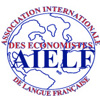Energy poverty in Europe : Is there a Kuznets relationship ?
Isabelle Cadoret
Université de Rennes, Condorcet Center for Political Economy, France isabelle.cadoret@univ-rennes1.fr
ORCID : 0000-0002-3083-3703
Véronique Thelen
Université de Rennes, Condorcet Center for Political Economy, France
ORCID : 0000-0001-8315-5961
Abstract : The phenomenon of fuel poverty is a problem recently identified in Europe and in particular in Southern and Eastern European countries. This paper investigates fuel poverty as an expression of environmental inequalities. It tests the existence of a Kuznets curve be- tween fuel poverty and GDP per capita in Europe. The study covers 28 European countries from 2004 to 2017 using aggregated data from Eurostat’s EU-SILC survey. To proxy the level of fuel poverty 2 indicators are alternatively tested, the percentage of individual unable to keep home adequately warm and a composite indicator. The results show the existence of a non-linear U-shaped relationship between fuel poverty and per capita income and not inverted U-shape as in the Kuznets relation. In Europe, economic development has been an important factor in reducing energy poverty, but a per capita income threshold exists after which economic growth no longer reduces fuel poverty. In conclusion, more future growth will not systematically induce less fuel poverty, measures on energy efficiency and / or measures to increase the purchasing power of households must be developed especially at the national level to target the most vulnerable households.
Keywords : fuel poverty, Kuznets.
Jel Classification : Q15, Q25, Q55.

